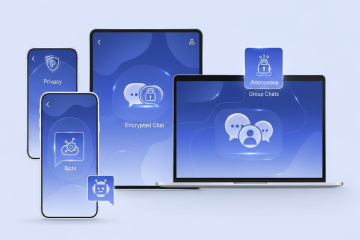Unlocking the Mystery Behind UPC Codes: A Dive into Their Origins
Have you ever wondered about the magic behind those mysterious black and white stripes on every product you purchase? Those are UPC codes, the unsung heroes of modern commerce. But where do these codes originate? Why are there numerous companies vying to sell them online? Let’s unlock the mystery behind UPC codes and delve into their fascinating origins.
The Birth of UPC Codes: Ensuring Uniqueness
Imagine a world where every product shares the same identification number. Chaos would reign supreme in the aisles of our favorite stores. Just like you wouldn’t want your credit card number to be someone else’s, products need their unique identifiers. This is where UPC codes step in.
These codes must be unique to distinguish one product from another. Otherwise, store computers would be left scratching their digital heads, unable to differentiate between items. It’s akin to MasterCard or Visa issuing the same credit card number to two different people. Who would foot the bill then?
So, can companies simply fabricate their own UPC codes? Absolutely not. If everyone did, chaos would ensue, and the entire process of price lookup and product identification would collapse like a house of cards. It’s akin to concocting your credit card number out of thin air – a recipe for disaster.
GS1.org: The Guardian of UPC Codes
To maintain order in this sea of barcodes, there exists a singular authority – GS1.org. This organization serves as the gatekeeper, ensuring that each manufacturer receives a unique set of UPC numbers. Just like a vigilant guardian, GS1.org prevents the overlap of barcode numbers, preserving the integrity of the entire system.
The Rise of UPC Retailers: A Tale of Evolution
In the early days of UPC codes in the U.S., the Uniform Code Council (UCC) held the reins of number assignments. Companies seeking UPC codes had to pay a one-time fee to join the UCC, in return receiving a block of 100,000 UPC numbers. However, as time wore on, it became evident that this model was unsustainable.
The UCC, faced with the impending exhaustion of UPC numbers and the need for a stable income, underwent a transformation in 2002. They transitioned to a subscription-based model, requiring members to pay annual fees to retain their UPC numbers. This move, however, sparked discontent among firms that had previously purchased their codes.
The Class Action Showdown: Shaping the UPC Landscape
The industry’s response to the UCC’s new policy was swift and decisive – a class-action lawsuit. The outcome of this legal battle reshaped the landscape of UPC code distribution. Firms that had joined the UCC before August 28, 2002, retained ownership of their UPC numbers, enabling them to resell them. Meanwhile, new entrants were directed to GS1 as the sole source of UPC numbers.
Navigating the UPC Maze: Renting vs. Owning
Today, businesses faced with the need for UPC codes have two primary options: renting from GS1.org or purchasing from pre-2002 assignees. Renting from GS1.org entails paying annual fees, akin to leasing, while purchasing from pre-2002 assignees offers a permanent number assignment.
Conclusion: Deciphering the UPC Code Conundrum
In the intricate web of commerce, UPC codes serve as the glue that holds everything together. From streamlining checkout processes to enabling efficient inventory management, these humble barcodes play a pivotal role. Understanding their origins and the nuances of their distribution is crucial for businesses navigating the modern marketplace. So, the next time you scan that barcode at the checkout, remember the journey it took to land in your hands – a journey shaped by innovation, regulation, and the quest for uniqueness.


